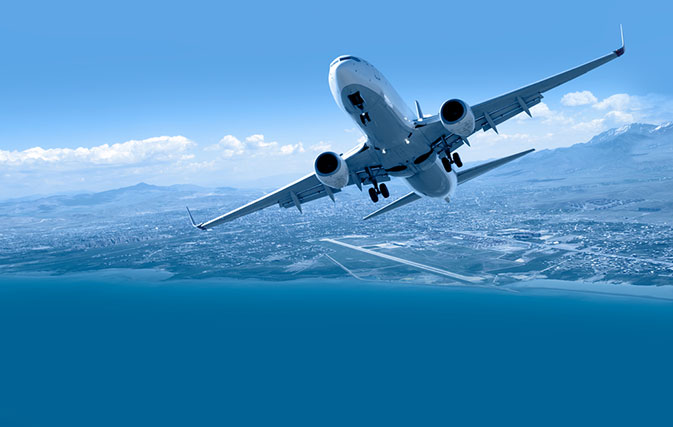This story originally ran in the Oct. 11, 2018 issue of Travelweek magazine. To get Travelweek delivered to your agency for free, subscribe here.
TORONTO — Ancillaries have gone from one-off add-ons to revenue behemoths for the airlines and now, smarting from rising fuel costs, many airlines are opting to bump up ancillaries – most recently, fees for checked baggage – instead of raising base fares.
Keeping base fares low means prices look good in a highly competitive environment, but where does that leave agents?
Every agent who made it through the commission caps and cuts in the mid to late 1990s knows that airline commissions are nowhere near what they used to be, but there’s still money to be made on most fare classes, and with overrides.
But when the non-commissionable ancillaries go up – while commissionable base fares remain static – agents are left out in the cold.
“Our members are frustrated with ‘surcharges and fees’ and every time there is a new one being imposed and an increase in existing fees, it triggers the frustration,” says ACTA’s Heather Craig-Peddie, VP Advocacy and Member Relations.
ACTA has been pushing back against NCFs (non-commissionable fees) for years, not just with airlines but cruise lines too, as well as tour operator currency surcharges.
“ACTA’s stance on NCFs is that all fees that are not taxes should be in the base fare and all ancillary fees should be commissionable,” says Craig-Peddie.
The wave of baggage fee increases from major airlines in both the U.S. and Canada has highlighted the gap between rising ancillary fees and static base fares all over again.
In recent weeks both Air Canada and WestJet announced fee increases for both the first checked bag (from $25 to $30) and the second checked bag (from $30 to $50). Delta, JetBlue and United have also bumped up their checked bag fees. Transat recently announced that it was standardizing its Eco Fares for its transatlantic, South, Canadian and U.S. destinations, part of a policy change the carrier says aligns its flexibility conditions with those of the airline industry. The move includes new checked bag fees for Eco Budget fares.
Ancillaries are a key part of the trend that’s seeing carriers add low-fare, high-restriction basic economy fare classes, which most agents avoid or decline to book because there’s no money to be made. Agents may also have to deal with negative feedback from clients booking basic economy fares, even when those clients say they know what they’re getting into. The same often goes for low-cost carrier fares.
For the airlines, thought, the sky’s the limit for ancillary opportunities with both basic fares and the LCC model.
And the airlines are looking for ways to boost revenue. The cost of jet fuel has gone up 50% in the past year, prompting airlines around the world to sharply downgrade their profit expectations. Delta says its fuel costs jumped $654 million in Q2 2018 versus Q2 2017.
Airline ancillary revenue consultant IdeaWorksCompany, in conjunction with CarTrawler, has done an annual review of ancillary revenues since 2007. That first year, the top 10 airlines, ranked by total ancillary revenue, generated US$2.1 billion in ancillary revenue. By 2017, that number had jumped to $29.7 billion.
ACTA has and will continue to raise the thorny issue of NCFs globally through the World Travel Agents Associations Alliance (WTAAA), and push for change not only in Canada, but worldwide.
Adds Craig-Peddie: “We understand why, in an industry that competes globally, an airline may choose to show their pricing the way they do. However our point of lobby has always been to understand why these additional fees are separated from the base fare and if agents are selling ancillary fees as part of their services, which they do, then they should receive compensation for selling these services.”
At the same time, she adds, agents should provide their clients with the best options available. “Knowing the products of your suppliers, a consumer may be better served by paying more for a certain fare that includes the baggage fee.”
Underlining the problem, Craig-Peddie offers this experience from a travel agent and ACTA member. “A recent comment from a member in Alberta stated that on an international flight they booked for a customer, the rate was posted at $75 per person each way. Adding $300 on an international flight for a couple to check their bags is a significant cost to the overall cost of the flight.”
IATA’s latest global passenger traffic data for August 2018 shows a 6.4% rise in air travel demand year over year, with a 5.5% capacity increase, keeping load factors steady with a 0.7% percentage point rise to 85.3%, the highest for any month since at least 1990.
“The industry experienced continued strong traffic growth in August, putting the cap on a very good peak travel season,” says Alexandre de Juniac, IATA’s Director General and CEO. “The all-time record load factor reflects that airlines are maximizing the efficiency of their assets at a time of rising fuel prices and other costs that are limiting the opportunities for low fare stimulation.”
The demand for air travel is at an all time high, load factors are good and prices are steady even as fuel costs take a bite out of profits. But the only way for non-commissonable ancillaries to go is up.

